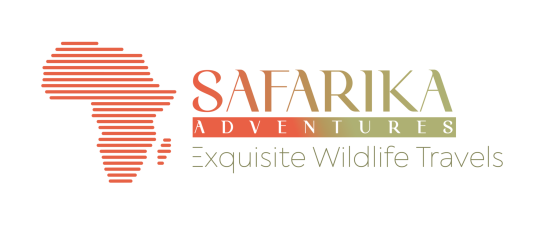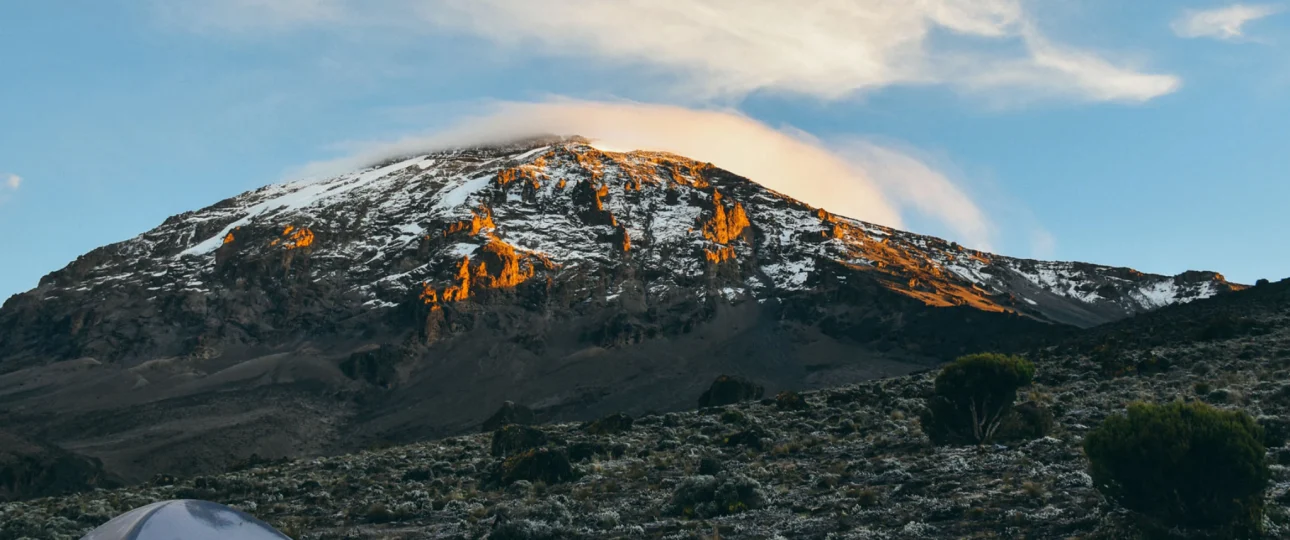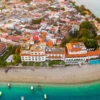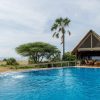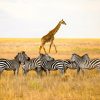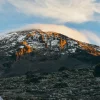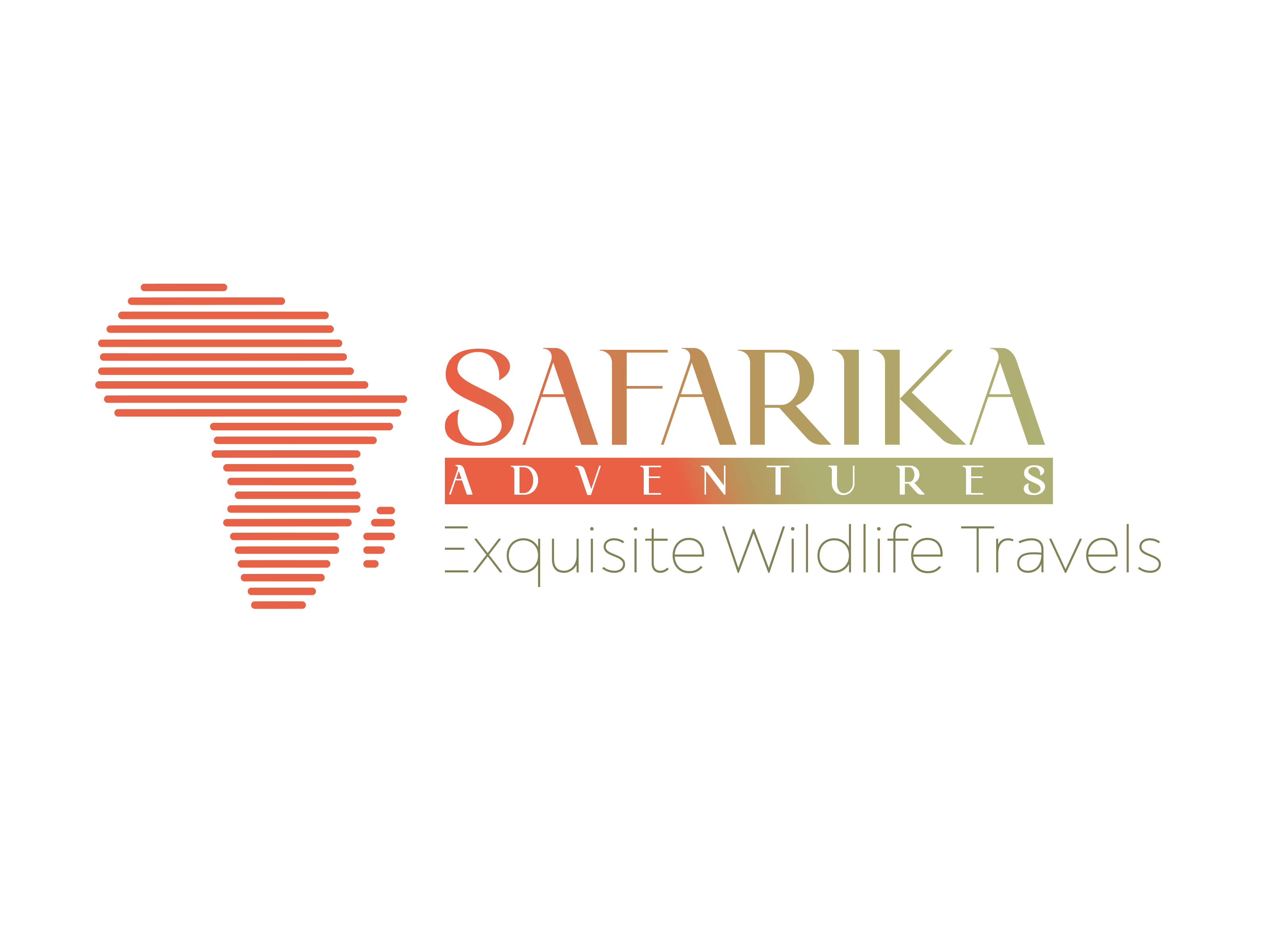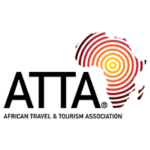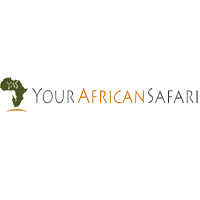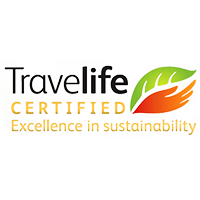Kilimanjaro and Mount Meru: What Each Hike Really Feels Like
You land in northern Tanzania and the sky feels bigger than it should. Kilimanjaro floats on the horizon like a snowy island. Meru sits closer, sharper, a dark amphitheatre with a bright rim. Most travelers arrive asking the same thing: Kilimanjaro and Mount Meru—what do they actually feel like to climb? Here’s the truth in plain words. Kilimanjaro is Africa’s highest point at 5,895 m / 19,341 ft and the world’s highest freestanding mountain; it’s non-technical, but altitude is the real test. Mount Meru rises to about 4,566 m / 14,980 ft, shorter yet wilder, climbed through Arusha National Park with an armed ranger escort and hut overnights. Both are worthy; together they make a perfect two-chapter story.
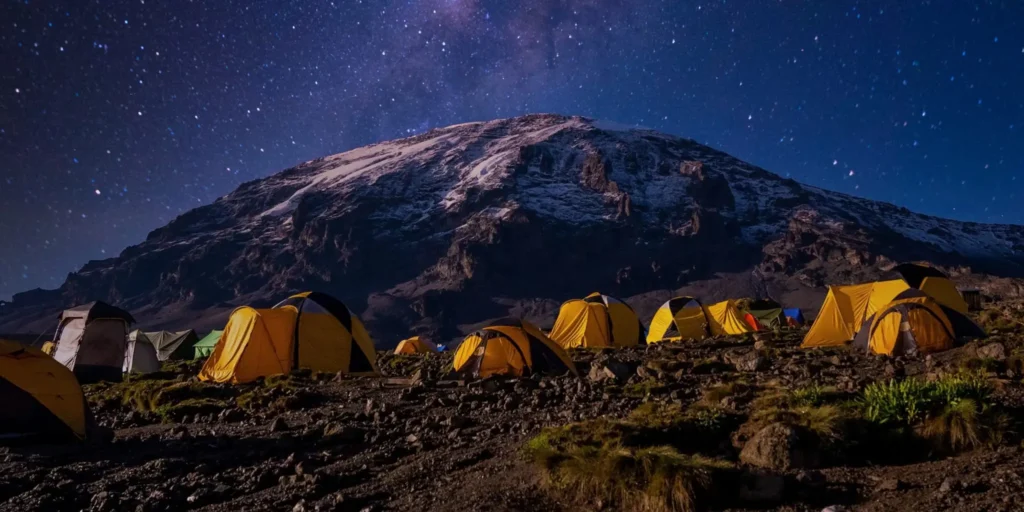
Two mountains, two rhythms (read this first)
Kilimanjaro is a long conversation with your lungs. You start in forest and step through five climate zones toward a cold, starry summit push. The routes that treat beginners best stretch the climb across 7–8 days—think Lemosho or a seven-day Machame—so your body can adapt while you keep moving. It is hiking, not rope work, but it is high; time on the mountain is the difference between a brave attempt and a confident summit.
Mount Meru is a quick, intense arc. Trails wind through fig forests and open glades; you may spot colobus monkeys or giraffe down low, then sleep in simple huts before a narrow, thrilling pre-dawn walk along the crater rim. It’s typically done in 3–4 days, and the park assigns a ranger to every group for wildlife safety. Meanwhile, sunrise can frame Kilimanjaro across the distance. It’s a warm-up that stands on its own.
Blunt truth: if you can give a week and you want the “Roof of Africa” sign, pick Kili and take the days you need. If you want fewer days, more wildlife around the trail, and useful acclimatization, pick Meru, rest one day, then go for Kili.
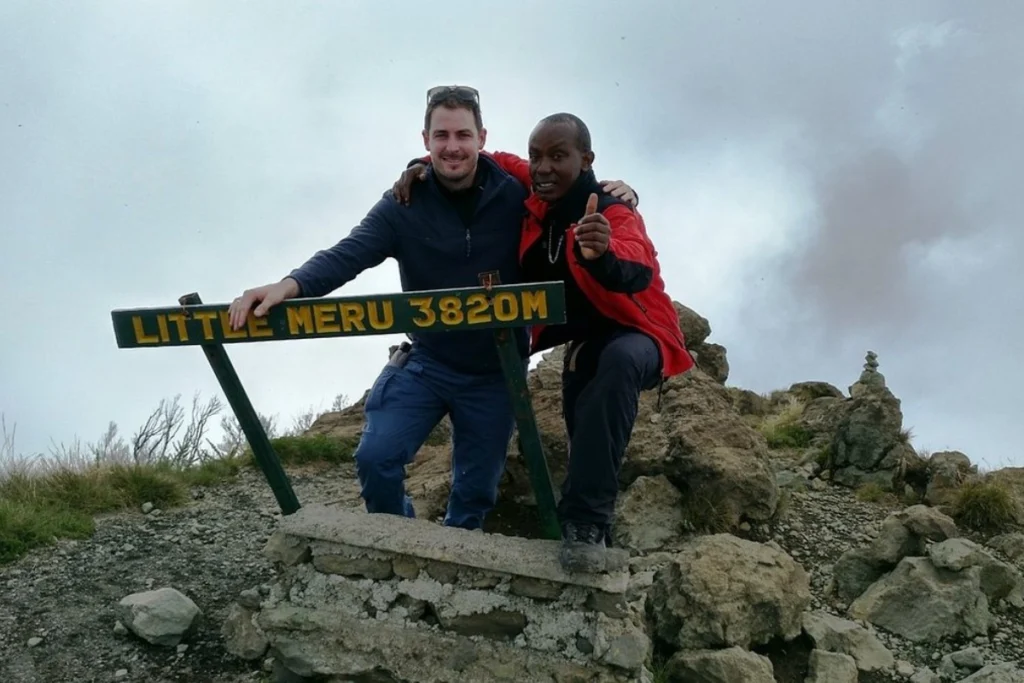
At a glance: Kilimanjaro & Mount Meru
| Factor | Kilimanjaro | Mount Meru |
|---|---|---|
| Elevation | 5,895 m / 19,341 ft | ~4,566 m / 14,980 ft |
| Typical length | 6–9 days (best 7–8) | 3–4 days |
| Overnights | Mostly camping | Huts (Miriakamba, Saddle) |
| Setting | High-alpine, wide horizons | Inside Arusha NP with wildlife on approach |
| Escort | No ranger required | Armed ranger required |
| Best fit | Bucket-list summit with time | Short schedule, acclimatization + views of Kili |
How it feels to climb each (an honest picture)
On Kilimanjaro, the days stack gently if you choose a gradual route. Forest gives way to heather and moorland, then a stark saddle of lava and light. The air dries, the pace slows, and you learn to love “pole pole.” The summit push begins in the dark. It isn’t glamorous; it’s focused. Headlamps arc into the cold and the sky slowly goes violet. When the crater edge appears, it’s sudden and quiet, then it hits you: Africa at your feet, a thin wind, a small sign that will live on your wall forever. The reason longer itineraries work is simple: they let you sleep lower after hiking higher and give your body time to adapt. Lemosho and Machame are popular because they do that well.
On Meru, the first steps already feel like a real safari. Rangers brief you at the gate; the path is alive with birds and the occasional rustle in the bush. Huts simplify logistics, and the mountain flips quickly from warm valleys to sharp volcanic architecture. The crater is a surprise: huge and dramatic. Summit morning along the rim is steeper and narrower than people expect, yet manageable with care and the ranger’s guidance. Then the sun spills over Kilimanjaro and everything goes quiet again. Many hikers step off Meru feeling tuned up, confident, and ready for Kili.
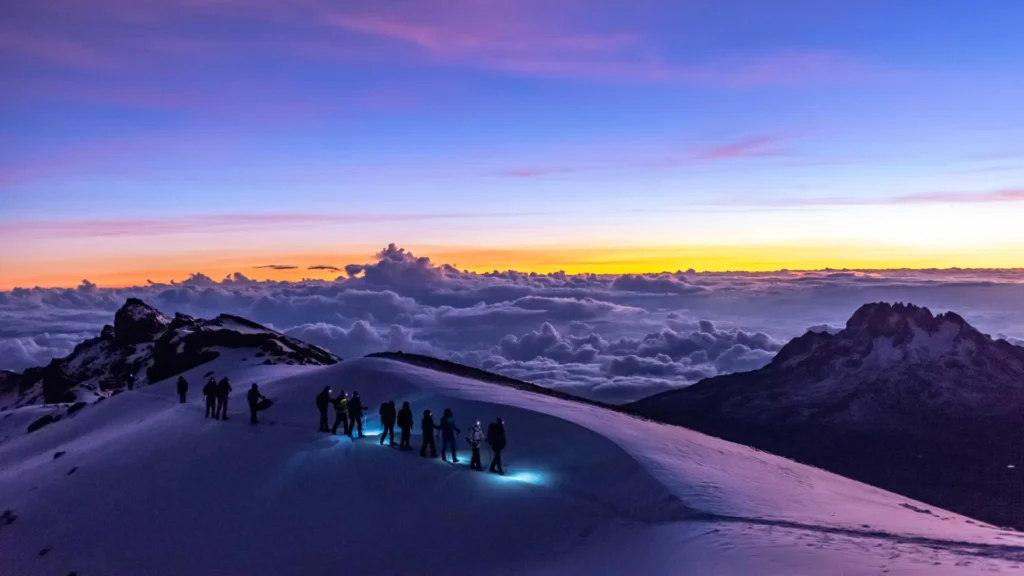
Best time to climb (and when to avoid)
Both mountains reward patience with timing. The prime windows are December to early March and mid-June to October. Skies tend to be clearer, trails drier, and summit mornings colder in a good way. The long rains often run March through May; the short rains arrive around November. You can still climb outside the prime windows, but you accept more cloud, slick paths, and fewer big-view days. Meru shares similar seasons and can deliver piercing views of Kili between December and March when the air is crisp. If your dates are fixed, don’t panic. Build a little extra time into the itinerary, and let a good guide pick the pace, the camp altitudes, and the start time for summit night.
Safety and rules you shouldn’t skip
No ropes and no ice tools on the standard routes does not mean casual. On Kilimanjaro, altitude is the risk you plan for. The best itinerary is the one that gives you more time, not fewer headaches. Choose 7–8 days on a route with steady gains, walk slowly, hydrate, and, importantly, eat even when you aren’t hungry, and be honest about symptoms. Expect guides to carry medical kits and pulse oximeters, to brief you properly, and to have a real evacuation plan. On Meru, the armed ranger is not a formality. You are moving through true wilderness with buffalo on the lower slopes and a narrow crater rim on summit morning. Follow the ranger’s pace, respect distances to wildlife, and keep your energy for the upper ridge where careful footwork matters. In both places, good operators make the hard things feel simple, not because they are easy, but because the plan is right.
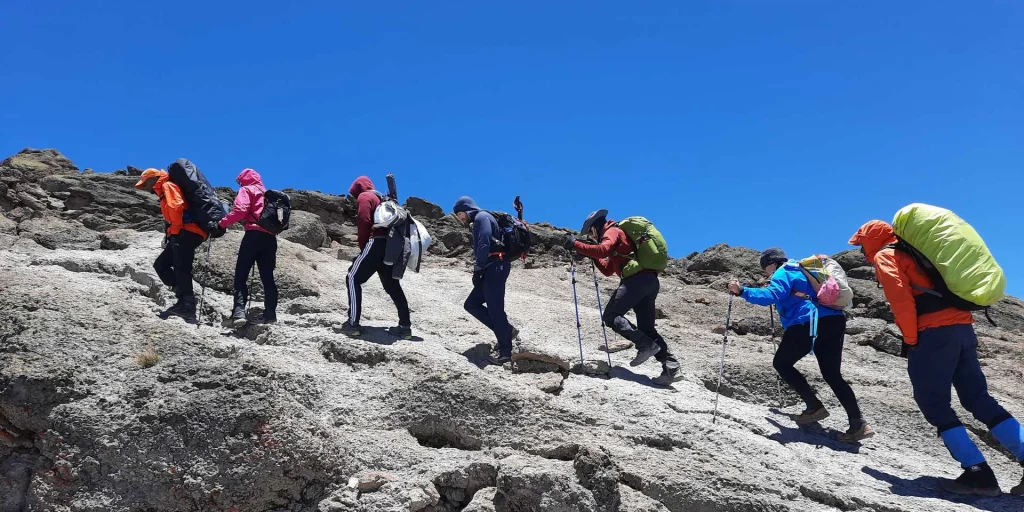
Sample itineraries
Meru only — 4 days
Day 1: Arusha to Momella Gate, slow forest climb to Miriakamba Hut.
Day 2: Miriakamba to Saddle Hut, optional acclimatization walk toward Little Meru.
Day 3: Pre-dawn summit along the crater rim, descend to Miriakamba.
Day 4: Easy walk out to the gate, return to Arusha.
(Hut overnights and ranger escort throughout.)
Kili only — 8 days (Lemosho)
Days 1–2: Forest to moorland, unhurried pace and short acclimatization walks.
Days 3–6: High plateau, “climb high, sleep low” rhythm to bank adaptation.
Day 7: Summit push before dawn, long but steady; descend to a lower camp.
Day 8: Walk out, big lunch, bigger grin.
Combo — 11–12 days
Meru (3–4 days) → rest day in Arusha or Moshi → Kilimanjaro (7–8 days) on Lemosho or a seven-day Machame. You arrive at Kili already dialed in, which is exactly the point.
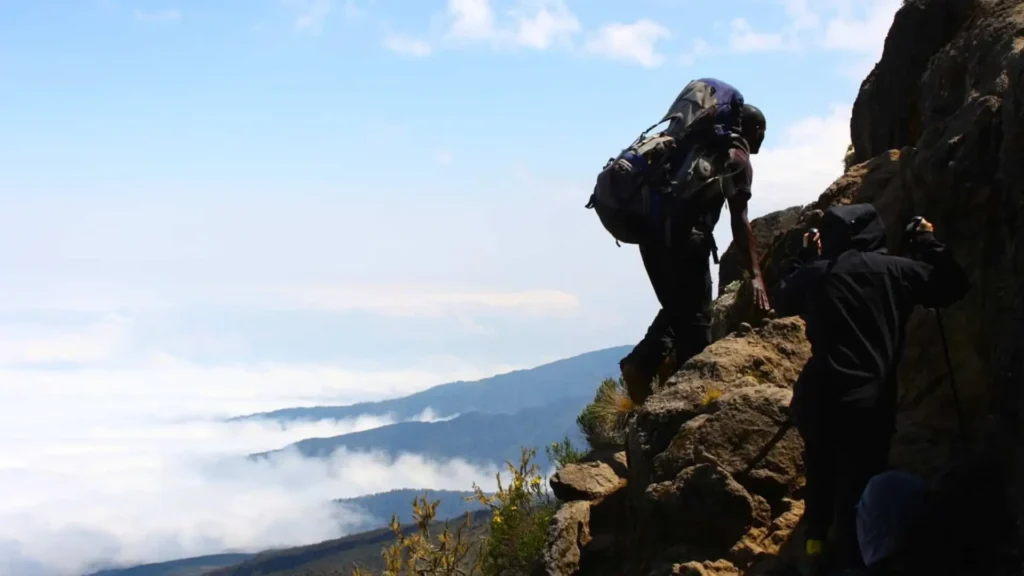
FAQ
Is Kilimanjaro technical?
No. The standard routes are trekking routes. The challenge is altitude and a long summit day. Good pacing and extra days beat bravado every time.
Do I really need a ranger on Meru?
Yes. It is required by Arusha National Park and it makes sense. You move through real wildlife habitat and a dramatic crater rim. The ranger manages both.
What improves Kili success the most?
Time on the mountain. Seven to eight days on Lemosho or a well-paced Machame gives your body space to adapt. Eat, drink, walk slowly, and sleep lower after hiking higher.
When are the best months?
Aim for December to early March and mid-June to October. You can still climb outside the prime windows, however, you accept more cloud and slick paths.
Which first: Kilimanjaro and Mount Meru?
If you want the big sign and you have a week, start with Kili. If you want a shorter, quieter climb with a smart acclimatization kick, start with Meru. If you want the full arc, do Meru → rest → Kili and enjoy both chapters of the same story.
The simple truth: how they complement each other
You don’t have to choose a winner. Kilimanjaro gives you scale and a name the world recognizes. Meru gives you intimacy and a ridge that feels like a secret. Pick the one that matches your time and temperament; if you can, take both and stitch them into a single, life-sized memory.
